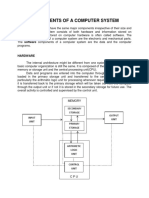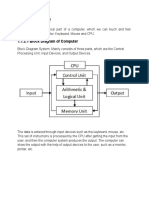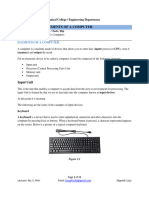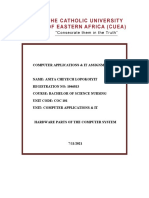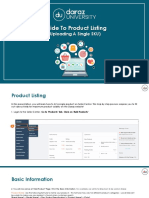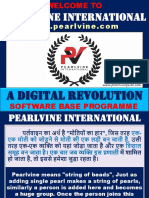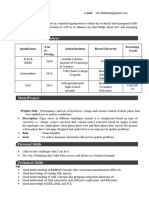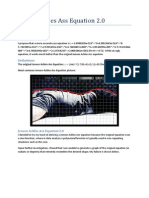0% found this document useful (0 votes)
15 views11 pages3 Architecture of A Computer System
This document provides an overview of computer hardware components, including the Central Processing Unit (CPU), motherboard, input/output devices, and storage units. It details the functions of various hardware elements such as modems, network cards, and different types of memory (ROM and RAM). Additionally, it explains the role of buses in data transfer and the BIOS system in computer initialization.
Uploaded by
ahmedanter78056Copyright
© © All Rights Reserved
We take content rights seriously. If you suspect this is your content, claim it here.
Available Formats
Download as PDF, TXT or read online on Scribd
0% found this document useful (0 votes)
15 views11 pages3 Architecture of A Computer System
This document provides an overview of computer hardware components, including the Central Processing Unit (CPU), motherboard, input/output devices, and storage units. It details the functions of various hardware elements such as modems, network cards, and different types of memory (ROM and RAM). Additionally, it explains the role of buses in data transfer and the BIOS system in computer initialization.
Uploaded by
ahmedanter78056Copyright
© © All Rights Reserved
We take content rights seriously. If you suspect this is your content, claim it here.
Available Formats
Download as PDF, TXT or read online on Scribd
/ 11














